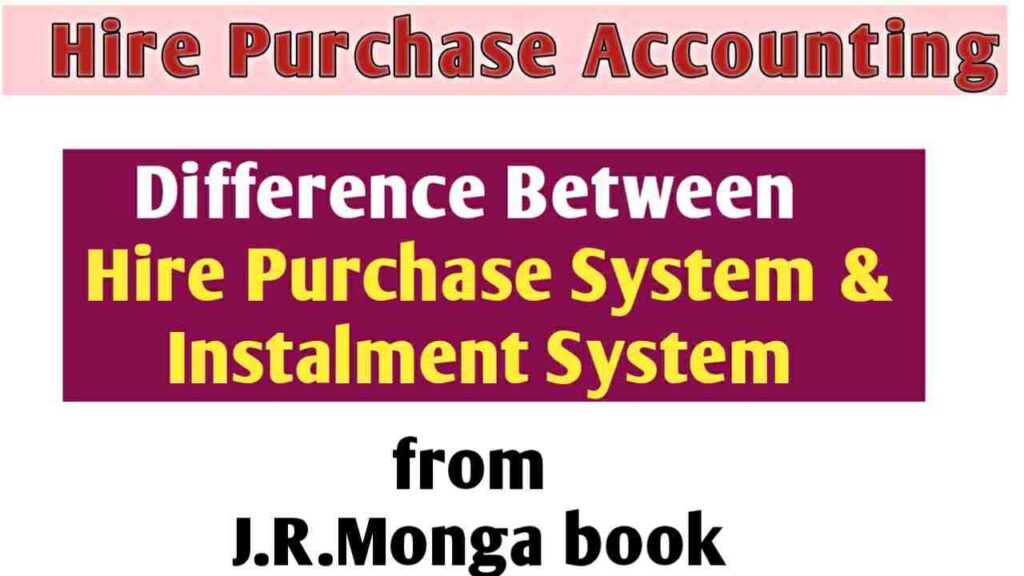
Explore 15 Key Difference between Hire purchase and Installment system
When considering purchasing a product or acquiring an asset, two commonly discussed options are the hire purchase system and the installment system. While these approaches share similarities, they also possess distinct characteristics that set them apart. Let’s delve into the 10 key difference between between Hire purchase and Installment system in a simpler language.
15 Difference between hire purchase and installment system
Financial Responsibilities: In a hire purchase arrangement, up until the last payment is made, the owner is financially responsible. An installment system, on the other hand, places all of the financial responsibility on the buyer at the time of purchase.
Ownership: In a hire purchase contract, the buyer only becomes the owner of the asset after the last payment is made. A lien or mortgage is placed on the asset until the full payment is made, but in an installment system, the buyer immediately becomes the owner.
Flexibility: When compared to installment systems, hire purchase agreements frequently provide more flexibility. It is a more flexible option because buyers can negotiate details like the down payment, the number of installments, and the length of the repayment period.
Interest and Charges: Due to the prolonged length of payments, hire purchase systems typically involve higher interest rates and fees. However, because the payment period for installment systems is typically shorter, they might have lower interest rates.
Depreciation and Maintenance: Under a hire purchase agreement, the owner is in charge of upkeep and insurance of the asset until full payment is received. In contrast, under an installment system, the buyer is initially solely in charge of these aspects.
Return and Resale: Returning the asset before paying off the balance is possible in a hire purchase system, though it frequently entails fees. As the registered owner in an installment system, the buyer can sell or trade the asset at any time.
Legal Protection: Hire purchase agreements are protected by law, ensuring the buyer’s rights in the event of default or disagreements. While legal protection for installment systems is possible, it may vary depending on the jurisdiction or the particulars of the contract.
Ownership Risk: In a hire purchase system, the owner is still responsible for the ownership risk up until the last payment is made. In an installment plan, the purchaser takes full responsibility for all ownership risks, including any possible depreciation or loss.
Affordability: Because an installment plan requires a smaller down payment than a hire purchase agreement, the initial cost of buying an asset is frequently lower. For purchasers with limited down payment resources, this may make it more affordable.
Early Settlement: In a hire purchase system, paying off the balance in advance of the predetermined term is frequently subject to penalties or fees. However, many installment payment plans permit early repayment without incurring fees, allowing customers to pay off their debts more quickly.
Potential buyers can choose the best option for their financial situation, preferences, and long-term goals by being aware of these ten differences between the hire purchase and installment system.
Also Read: Explore 15 Key Difference between half wave and full wave rectifier